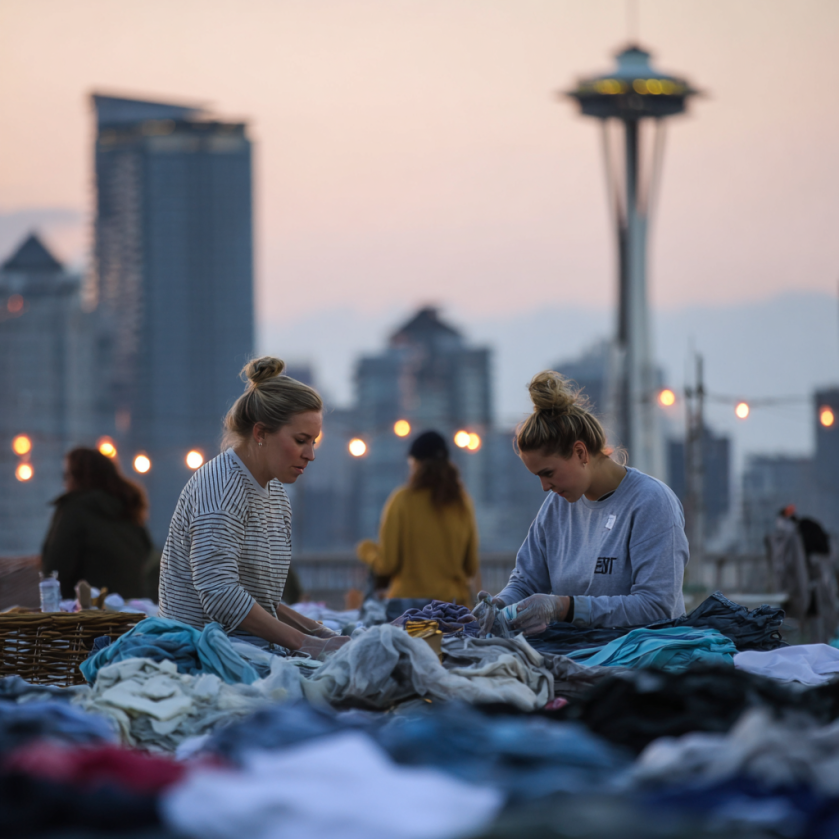Helping Communities, One Garment at a Time With Brendon Pack
Organizing a clothing drive is a powerful way to support individuals and families in need—whether they’re experiencing homelessness, recovering from disasters, or struggling to make ends meet.
With proper planning, community involvement, and a clear goal, your clothing drive can make a meaningful impact.
Recently, I discussed the strategy of food bank donations and what to give and what not to give. This guide walks you through the steps to successfully organize a clothing drive in your community, with specific examples from U.S. cities to inspire your efforts.
Every donation helps, so let’s explore.
1. Define Your Purpose and Audience
Start by identifying the target population. Are you collecting clothes for:
- Homeless individuals?
- Families impacted by natural disasters?
- Veterans?
- Foster youth?
- Refugees or immigrants?
Example: Los Angeles, CA
In Skid Row, many local nonprofits like the Downtown Women’s Center or The Midnight Mission focus on the homeless population. A drive in L.A. might prioritize durable, warm clothing and hygiene packs for unsheltered individuals.
2. Partner with Local Organizations
Collaborate with trusted local shelters, food banks, or social service agencies. These partners can:
- Help distribute clothing.
- Guide what types of clothing are most needed.
- Provide drop-off locations and volunteers.
Example: Atlanta, GA
Partnering with Atlanta Mission or Lost-n-Found Youth (which supports LGBTQ+ homeless youth) ensures that the donations reach the right recipients efficiently.
3. Choose a Timeframe and Set Goals
Select a duration for the drive—typically 2 to 4 weeks is ideal. Consider aligning your clothing drive with:
- Winter (for coats, gloves, and thermal wear)
- Back-to-school season (children’s clothing)
- Disaster response efforts (like hurricane relief)
Set a measurable goal:
- Collect 500 items
- Fill 10 donation bins
- Engage 5 schools or workplaces
Example: Buffalo, NY
In colder cities like Buffalo, a “Warm for Winter” campaign from October to December can focus on collecting coats, boots, hats, and thermal layers.
4. Organize Drop-Off Locations
Secure drop-off sites that are easily accessible and safe. Ideal locations include:
- Schools and universities
- Churches or synagogues
- Local businesses and coffee shops
- Fitness centers or libraries
Provide bins or boxes clearly labeled with “Clothing Drive for [Cause]” and any specific donation requests.
Example: Austin, TX
Coordinate with the Central Texas Food Bank or Foundation for the Homeless and place bins at Whole Foods stores or YMCA locations across the city.
5. Promote Your Drive
Use multiple channels to spread the word:
- Create flyers and posters.
- Use social media platforms with community-specific hashtags.
- Contact local newspapers, radio stations, and bloggers.
- Encourage schools and workplaces to host mini-drives.
Make it visual and include success stories or images of past drives.
Tip: Offer incentives—raffle prizes or community service hours for students—to boost engagement.
6. Sort and Prepare Donations
Plan a sorting day with volunteers. Organize items by:
- Type: shirts, pants, jackets, shoes
- Gender: men’s, women’s, unisex
- Age: baby, children, teens, adults
Check that all clothing is clean and in good condition. Recycle or repurpose unsalvageable items through textile recyclers.
Example: Seattle, WA
In my hometown of Seattle, our wet climate means raincoats, waterproof boots, and socks are essential. Be sure to sort based on weather relevance when partnering with groups like Mary’s Place.
7. Deliver and Celebrate Impact
Coordinate with your nonprofit partner for distribution or host your own “pop-up shop” where recipients can choose items with dignity.
Follow up with:
- A thank-you message to donors and volunteers.
- Social media updates sharing how many people were helped.
- A short video or photo collage showcasing the drive’s success.
Example: Chicago, IL
The Night Ministry or Cradles to Crayons in Chicago often share impact stats publicly. This encourages future involvement and builds trust in your drive.
8. Plan for the Next One
After the drive:
- Document what worked and what didn’t.
- Gather feedback from volunteers and partners.
- Keep in touch with your community and start planning for future seasonal or themed drives.
Tip: Turn your one-time effort into an annual tradition!
Final Thoughts
Organizing a clothing drive takes coordination, communication, and compassion—but the rewards are immense. By mobilizing your community, you help restore dignity and warmth to people facing hard times.
Whether you’re in a big city like New York or a small town in rural Ohio, every pair of socks, jacket, or baby onesie makes a difference.
Quick Checklist: Steps to Organize a Clothing Drive
✅ Identify the cause and beneficiaries
✅ Partner with local nonprofits
✅ Set a timeline and goals
✅ Arrange donation sites
✅ Promote the event
✅ Sort and deliver the clothing
✅ Share impact and plan the next drive
Resources by City
| City | Organization | Website |
| Los Angeles | Downtown Women’s Center | www.downtownwomenscenter.org |
| Atlanta | Lost-n-Found Youth | www.lnfy.org |
| Buffalo | Journey’s End Refugee Services | www.jersbuffalo.org |
| Austin | Foundation for the Homeless | www.foundationhomeless.org |
| Seattle | Mary’s Place | www.marysplaceseattle.org |
| Chicago | Cradles to Crayons | www.cradlestocrayons.org/chicago |
